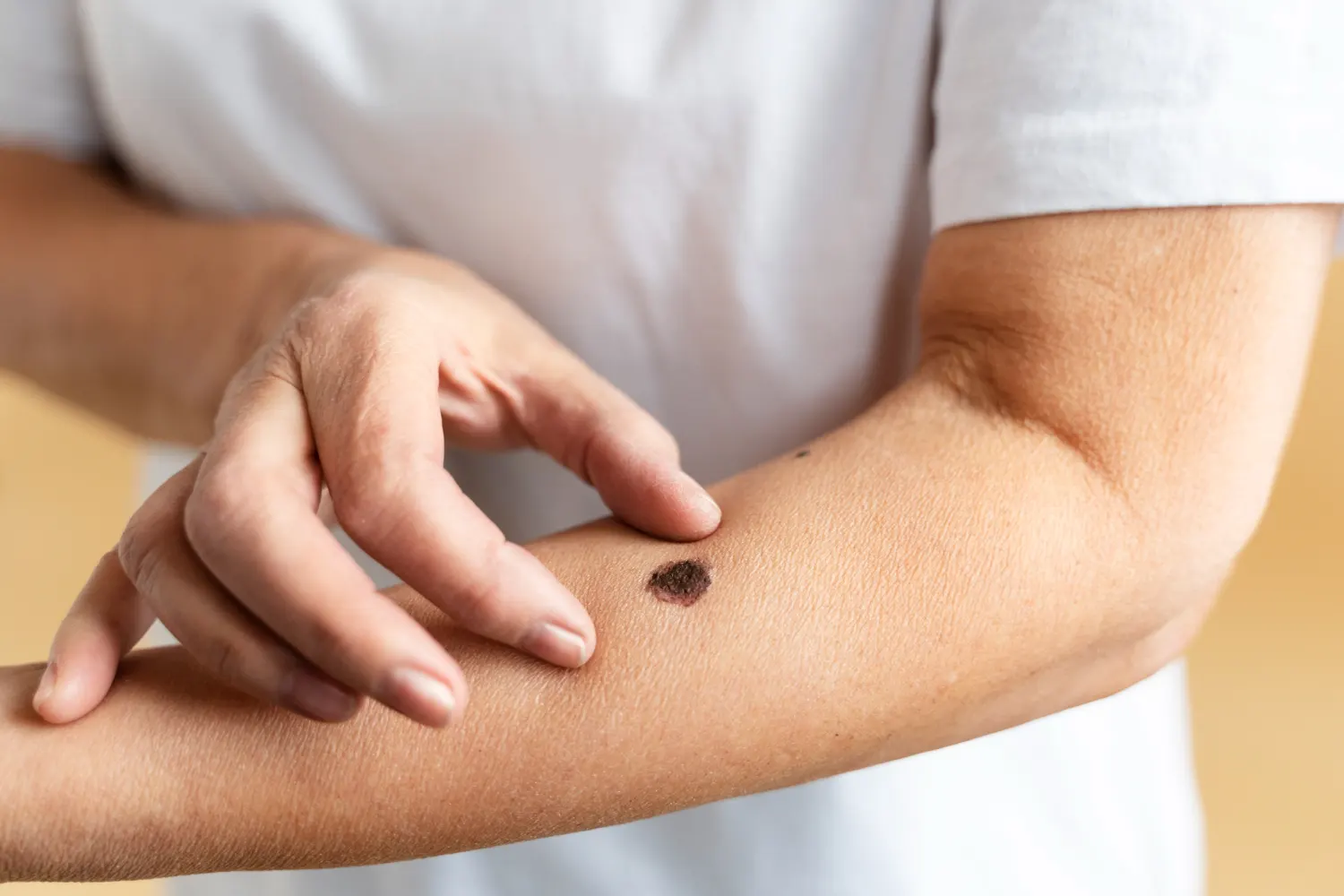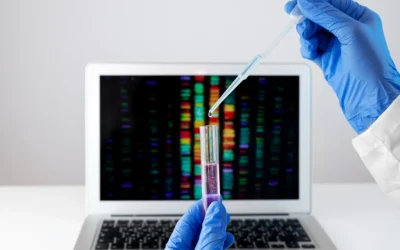Skin cancer is the most common form of cancer worldwide, affecting millions of people each year. While early detection significantly improves treatment outcomes, many cases go unnoticed until they progress to more advanced stages. Performing regular skin self-examinations can help individuals identify suspicious changes early, leading to timely medical intervention and better prognosis.
This guide provides a comprehensive, step-by-step approach to performing a skin cancer self-check, detailing the tools needed, areas to examine, warning signs to look for, and best practices for monitoring skin changes over time. By incorporating self-examinations into a routine health regimen, individuals can take a proactive role in safeguarding their skin health.
In This Article
Understanding Skin Cancer and Its Risk Factors
Skin cancer develops when abnormal skin cells grow uncontrollably due to DNA damage, often caused by excessive exposure to ultraviolet (UV) radiation from the sun or tanning beds. There are three primary types of skin cancer:
- Basal Cell Carcinoma (BCC): The most common and least aggressive type, often appearing as a shiny bump or sore that does not heal.
- Squamous Cell Carcinoma (SCC): A more aggressive form that may develop as a scaly patch, wart-like growth, or non-healing sore.
- Melanoma: The most dangerous type, capable of spreading rapidly to other organs if not caught early. Melanomas often resemble irregular moles.
Several factors increase the risk of developing skin cancer:
| Risk Factor | Details |
|---|---|
| Excessive Sun Exposure | Prolonged UV radiation damages skin cells, increasing cancer risk. |
| Fair Skin, Light Eyes, Red or Blonde Hair | Individuals with less melanin are more susceptible to sun damage. |
| History of Sunburns | Severe sunburns, especially in childhood, raise the likelihood of skin cancer later in life. |
| Family History | A genetic predisposition to skin cancer increases risk. |
| Weakened Immune System | Conditions like HIV/AIDS or immunosuppressive treatments make skin more vulnerable. |
| Frequent Tanning Bed Use | Artificial UV exposure is strongly linked to melanoma and other skin cancers. |
Understanding these risk factors highlights the importance of routine self-examinations, especially for those in high-risk groups.
Preparing for a Skin Self-Examination
Conducting a thorough self-check requires a well-lit space and appropriate tools. The best time to perform a self-exam is after a shower, when the skin is clean and well-illuminated.
Essential Tools for a Skin Self-Check
- Full-length mirror – Helps view large areas of the body.
- Hand mirror – Useful for inspecting hard-to-see spots, such as the back of the neck and scalp.
- Blow dryer – Helps part hair to examine the scalp.
- Bright lighting – Ensures clarity when examining small skin changes.
- Smartphone or camera – Allows documentation of moles or lesions for future comparison.
- Notebook or skin map – Helps track and note any new or evolving spots.
Step-by-Step Guide to Performing a Skin Cancer Self-Check
Step 1: Examine Your Face and Neck
Begin by standing in front of a well-lit mirror. Carefully inspect your face, including your nose, lips, and the area around your eyes. Use the hand mirror to check behind your ears and along your hairline. Skin cancer can develop on the lips and eyelids, so be thorough in your assessment.
Step 2: Check Your Scalp
Using a blow dryer and a hand mirror, part your hair in sections to examine your scalp. Look for new growths, sores that do not heal, or scaly patches. If possible, ask a friend or family member to help with this step.
Step 3: Inspect Your Hands and Arms
Examine both sides of your hands, including your palms, backs, and between your fingers. Pay close attention to your fingernails and cuticles. Then, scan your wrists and continue up your forearms. Use a mirror to view the backs of your arms and underarms.
Step 4: Examine Your Torso and Chest
Standing in front of the mirror, examine your neck, chest, and torso. Lift your breasts to check the skin underneath, as skin cancer can develop in hidden areas.
Step 5: Scan Your Upper and Lower Back
Use a hand mirror to check your upper and lower back, including the back of your neck and shoulders. If necessary, ask someone for assistance in viewing hard-to-reach areas.
Step 6: Inspect Your Legs and Feet
Sit down and check the front and sides of your thighs, shins, and knees. Look at the tops and soles of your feet, between your toes, and under your toenails. Skin cancer can develop on the feet, even in areas not commonly exposed to sunlight.
Step 7: Examine Your Genital and Buttock Area
Though less common, skin cancer can appear in areas not exposed to the sun, including the genitals. Use a mirror to examine these regions carefully.
Warning Signs: What to Look For
When performing a self-check, it’s essential to recognize suspicious changes in the skin. The ABCDE Rule is a widely used guideline for identifying melanoma:
| ABCDE Rule | Description |
|---|---|
| A – Asymmetry | One half of the mole looks different from the other. |
| B – Border | Irregular, jagged, or blurred edges. |
| C – Color | Multiple shades of brown, black, red, blue, or white. |
| D – Diameter | Larger than 6mm (about the size of a pencil eraser). |
| E – Evolving | Changes in size, shape, color, or symptoms such as itching or bleeding. |
In addition to the ABCDE rule, be mindful of:
- Persistent sores that do not heal within three weeks.
- Scaly, red, or rough patches of skin.
- Growths that increase in size or change in texture.
- New moles appearing in adulthood.
Tracking Changes and When to See a Doctor
Consistency is key when it comes to skin self-examinations. Establish a routine by checking your skin once a month. Using a skin map or smartphone photos can help track any changes over time.

When to See a Dermatologist
Schedule a dermatology appointment if you notice:
- A new mole or lesion that looks unusual.
- A mole that changes rapidly in color, shape, or size.
- A sore that does not heal or continuously bleeds.
- A growth that feels tender, painful, or itchy.
A professional skin exam provides additional reassurance, especially for individuals with a personal or family history of skin cancer.
Conclusion
Performing a skin self-examination is a proactive step in early skin cancer detection. By understanding what to look for and maintaining a routine, individuals can identify potential concerns before they become severe. Since skin cancer is highly treatable when caught early, self-checks should be a regular part of personal health care. If any suspicious changes occur, seeking prompt medical evaluation can make a life-saving difference.
References
- American Academy of Dermatology. (2024). Find skin cancer: How to perform a skin self-exam. Retrieved from https://www.aad.org
- Skin Cancer Foundation. (2024). The importance of early detection. Retrieved from https://www.skincancer.org
- Cleveland Clinic. (2024). Skin self-exam: What to look for. Retrieved from https://my.clevelandclinic.org










0 Comments